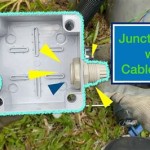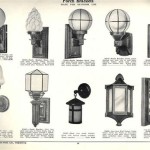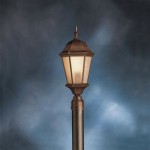How To Plant Outdoor Planters: A Comprehensive Guide
Planting outdoor planters is a rewarding activity that allows individuals to enhance the aesthetic appeal of their homes and outdoor spaces. A well-planted container garden can add color, texture, and visual interest, transforming patios, balconies, and entryways into inviting and vibrant areas. This article provides a comprehensive guide to planting outdoor planters, covering essential considerations from choosing the right container and soil to selecting plants and providing proper care.
Selecting the Right Container
The first step in creating a successful outdoor planter is choosing the appropriate container. Considerations include size, material, drainage, and aesthetic appeal. The size of the container should be proportionate to the space where it will be placed and the size of the plants that will be grown within it. A larger container will generally hold more moisture and require less frequent watering, which can be advantageous in hotter climates or for individuals with busy schedules. Conversely, a smaller container may dry out more quickly and require more vigilant monitoring.
The material of the container also affects its suitability for outdoor planting. Common materials include terracotta, plastic, wood, metal, and concrete. Terracotta pots are porous, allowing for good aeration and drainage, but they can dry out quickly and are susceptible to cracking in freezing temperatures. Plastic pots are lightweight, inexpensive, and retain moisture well, but they can become brittle over time and may not be as aesthetically pleasing as other options. Wooden planters offer a natural look and can provide good insulation for plant roots, but they require regular maintenance to prevent rotting. Metal containers can add a modern and stylish touch, but they can heat up quickly in direct sunlight, potentially damaging plant roots. Concrete planters are durable and offer a substantial presence, but they are heavy and can be difficult to move.
Proper drainage is crucial for the health of plants in outdoor planters. Containers must have drainage holes at the bottom to allow excess water to escape. Without adequate drainage, the soil can become waterlogged, leading to root rot and ultimately plant death. If a container does not have drainage holes, they can be drilled using a masonry drill bit for terracotta or concrete pots or a standard drill bit for plastic or metal containers. Lining the bottom of the container with a layer of gravel or broken pottery shards can also improve drainage, although this is less critical if the container has adequate drainage holes.
Finally, the aesthetic appeal of the container should complement the style of the surrounding environment and the plants that will be grown within it. Choose a container that is visually appealing and fits with the overall design of the outdoor space. Consider the color, shape, and texture of the container when making a selection. A cohesive and well-coordinated container garden can significantly enhance the beauty of an outdoor area.
Preparing the Soil and Planting
The selection and preparation of the soil are paramount to the success of outdoor planters. Using native garden soil is generally discouraged, as it can be too heavy, compact, and poorly drained for container gardening. Instead, a high-quality potting mix specifically formulated for containers should be used. Potting mixes are typically composed of peat moss, perlite, vermiculite, and other ingredients that provide good aeration, drainage, and water retention.
Before filling the container with potting mix, consider adding a layer of landscape fabric to the bottom to prevent soil from washing out of the drainage holes. This will also help to keep the drainage holes clear and prevent them from becoming clogged with soil. Next, fill the container with potting mix, leaving a few inches of space at the top. Avoid compacting the soil, as this can impede drainage and root growth. Gently tap the sides of the container to settle the soil.
When selecting plants for outdoor planters, consider factors such as sunlight exposure, climate, and personal preferences. Choose plants that are well-suited to the specific growing conditions of the location where the planter will be placed. For example, if the planter will be in a sunny location, select plants that thrive in full sun. If the planter will be in a shady location, choose plants that tolerate or prefer shade. Consider the mature size of the plants and ensure that they will not outgrow the container too quickly. A mix of upright plants, trailing plants, and mounding plants can create a visually appealing and dynamic container garden.
Before planting, gently remove the plants from their nursery pots and loosen the root ball. This will encourage the roots to spread out and establish themselves in the new soil. Dig a hole in the potting mix that is large enough to accommodate the root ball of each plant. Place the plant in the hole and backfill with potting mix, gently firming the soil around the base of the plant. Be sure to plant the plants at the correct depth. The top of the root ball should be level with the surface of the soil. Water the plants thoroughly after planting to help settle the soil and hydrate the roots.
Caring for Outdoor Planters
Proper care is essential for maintaining the health and beauty of outdoor planters. This includes regular watering, fertilization, pruning, and pest control. The frequency of watering will depend on factors such as the type of plants, the size of the container, the weather conditions, and the type of potting mix used. Generally, planters should be watered when the top inch of soil feels dry to the touch. Water deeply and thoroughly, ensuring that the water reaches the roots of the plants. Avoid overwatering, as this can lead to root rot. During hot and dry weather, planters may need to be watered more frequently.
Fertilizing outdoor planters is important for providing the plants with the nutrients they need to thrive. Use a slow-release fertilizer or a water-soluble fertilizer to provide a balanced supply of nutrients. Follow the instructions on the fertilizer packaging for application rates and frequency. Avoid over-fertilizing, as this can burn the roots of the plants. Deadheading spent flowers and pruning leggy growth will encourage new blooms and maintain the shape of the plants. Regular pruning can also help to improve air circulation and prevent fungal diseases.
Outdoor planters are susceptible to various pests and diseases. Monitor the plants regularly for signs of infestation or infection. Aphids, spider mites, whiteflies, and other pests can damage plants by sucking their sap or feeding on their leaves. Fungal diseases such as powdery mildew and black spot can also affect plants in outdoor planters. Treat infestations and infections promptly using appropriate insecticides or fungicides. Organic pest control methods, such as insecticidal soap and neem oil, can be effective for controlling many common pests. Ensure that the plants have adequate air circulation and are not overcrowded to prevent fungal diseases.
In colder climates, outdoor planters may need to be protected from freezing temperatures. Tender plants that are not winter-hardy should be brought indoors or moved to a sheltered location. Insulating the containers with burlap or bubble wrap can help to protect the roots from frost damage. Avoid watering the plants when temperatures are below freezing, as this can cause the soil to freeze and expand, potentially cracking the containers.
By following these guidelines, individuals can successfully plant and maintain beautiful outdoor planters that will enhance the beauty of their homes and outdoor spaces for years to come. The key is to select the right container and soil, choose plants that are well-suited to the growing conditions, and provide proper care and maintenance. With a little planning and effort, anyone can create a stunning container garden.

Planter Ideas 18 Inspiring Design Tips For Gorgeous Garden Containers

24 Stunning Container Garden Planting Ideas A Piece Of Rainbow

Best Pots For Outdoor Plants How To Choose Color Size And Shape Creative Design Manufacturing

Everything You Need To Know About Container Gardening

7 Planting Tips For Large Garden Pots

Planters Can Transform Your Outdoor Space Here S How To Use Them The Seattle Times

How To Plan And Plant Lush Outdoor Planters

16 Container Gardening Ideas Potted Plant We Love

How To Plant Flower Pots Momcrieff

Bigger Really Is Better Tips On Container Gardening Proven Winners







